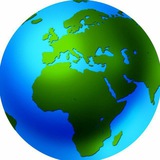tg-me.com/mapping_upsc_prelims/46
Last Update:
Solutions for water resources management
▪️Water Resource Management. (WRM)
✅World Bank defines WRM as the “process of planning, developing, and managing water resources, in terms of both water quantity and quality, across all water uses”.
✅ It includes the institutions, infrastructure, incentives, and information systems that support and guide water management.
✅According to the World Bank, water resources management seeks to harness the benefits of water by ensuring there is sufficient water of adequate quality for drinking water and sanitation services, food production, energy generation, inland water transport, and water-based recreational, as well as sustaining healthy water-dependent ecosystems and protecting the aesthetic and spiritual values of lakes, rivers, and estuaries.
✅Water resource management also entails managing water-related risks, including floods, drought, and contamination.
✅ One of the goals of water resource management is water security.
✅ It is not possible to ‘predict and plan’ a single path to water security for rapidly growing and urbanizing global populations. This is due to climatic and non-climatic uncertainties.
✅To help strengthen water security, there is a need to build capacity, adaptability and resilience for the future planning and management of water resources.
▪️Why water resource management is important?
It is important because disastrous water crisis has been creeping up on us for years. Water tables have declined precipitously, even by thousands of feet in some parts of Punjab, Haryana and Andhra Pradesh. Tanks and wells have gone dry. Some rivers have shrunk while other smaller ones have completely dried up. Water rationing is routine in many urban areas, while in many villages women are trudging longer distances to fetch water.
In addition to this, there are following issues
✅Rise in Water Stressed regions: More than a third of India's population lives in water-stressed areas and this
number is set to grow due to depleting groundwater and rising urbanization. India placed thirteenth among the world's 17 ‘extremely water-stressed’ countries, according to the Aqueduct Water Risk Atlas released by the World Resources Institute (WRI).
✅Chronic Water scarcity: Hydrological uncertainty and extreme weather events (floods and droughts) are becoming more common. A NITI Aayog report in 2018 stated bluntly that 600 million people, or nearly half of India's population, face extreme water stress. That three-fourths of India's rural households do not have piped, potable water and rely on sources that pose a serious health risk.
✅Social and Political conflicts: Water scarcity is leading to social and political conflicts at different levels of the government. Internal water crises are also a national security concern. There’s a Growing resentment among
downstream populations toward the affluent, seemingly unconcerned citizens staying upstream, who by the virtue of their position seem to get away with their actions.
Skewed Priorities Diversion of water towards an urban megacity at the cost of the millions living in semi-urban and rural communities in the surrounding regions has been routine practice in India. Such inequity in the access to a resource as fundamental as water is bound to trigger migrations, sociocultural resentment, pressure on urban resources, and competition and conflict.
#mains
Source - OnlyIAS
BY Mapping
Warning: Undefined variable $i in /var/www/tg-me/post.php on line 283
Share with your friend now:
tg-me.com/mapping_upsc_prelims/46
